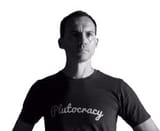GAME ART: WERC’S THE VOYEUR OF UTTER DESTRUCTION (AS BEAUTY) (2025)
Standing before The Voyeur of Utter Destruction (As Beauty), one is confronted by the chilling absurdity of purchasing the right to obliterate a city. In this interactive installation, Dutch Collective WERC lays bare the uneasy, visually seductive appeal of spectacular violence. The participant, posed as a player and a consumer, trades money for escalating scales of destruction, a grim parody of the transactional logic governing both entertainment and global politics.
In Nuclear War: A Scenario, Annie Jacobsen writes, “IA 1-megaton thermonuclear weapon detonation begins with a flash of light and heat so tremendous it is impossible for the human mind to comprehend. One hundred and eighty million degrees Fahrenheit is four or five times hotter than the temperature that occurs at the center of the Earth’s sun.” This is a scenario so harrowing that it resists comprehension. Yet here, reduced to a button press and a digital detonation, mass destruction becomes a (visually compelling, dare I say) game. WERC’s work lays a finger on that ethical nerve, asking: what happens when the unimaginable becomes spectacularly consumable?
The installation’s command console, emblazoned with the phrase BUY AN EXPLOSION, places the audience in a position of ultimate agency, if only virtually. This simulated power to demolish an entire city in seconds resonates with Bakunin’s provocation, embraced by the artists: “The urge to destroy is also a creative urge.” The idea that annihilation satisfies a creative or transformative impulse is especially sinister in a world where nuclear deterrence still relies on the threat of total erasure. The mantra of Silicon Valley broligarchs, creative destruction, acquires yet a new terrifying meaning in the age of nuclear accelerationism.
WERC’s pointed critique lands with uncomfortable force. Modern entertainment has fetishized explosions: film, games, and news cycles alike present destruction in high resolution, from every angle, as a feast for the senses. But when these explosions leave the realm of fiction and cross into possible futures, the moral calculus changes. The digital violence of The Voyeur of Utter Destruction (As Beauty) is, in effect, a rehearsal for complicity: a mirror to our own appetite for ruin, disguised as spectacle.
By harnessing the Unreal Game engine to question our participation in this cycle of destructive desire, WERC confronts us with the pleasure we take in omnipotence, whether virtual or real. It is a moment that unravels our moral comfort, exposing a deep ambivalence between condemnation and consumption. In a contingency where, as Jacobsen warns, nuclear guardians may fail catastrophically, the work resonates as a cautionary reflection on how easily we aestheticise mass death, trading ethics for a brief illusion of control.
In The Voyeur of Utter Destruction (As Beauty), the interval between press start to game over is incredibly short.
The artist collective WERC creates and develops interactive media art that bridges nature, theatre, science, and technology. At the heart of their practice lies a commitment to humanising technology and exploring the dynamic interplay between people, nature, and machines. Through their installations and performances, WERC probes the threshold between the physical and the digital, asking where one world ends and the other begins—and whether such a division can truly be made. WERC consists of Olav Huizer, Joachim Rümke, and Jelle Valk, who met while studying at the Minerva Academy in Groningen. United by a shared passion for digital art and site-responsive projects, they have since worked collectively to challenge perceptions of how art can inhabit and transform contemporary environments.
Credits
Concept: WERC
Business coordination: Jesse Korte
Sound design: Nicholas Thayer
Photos: Nienke Maat
Co-design: Britt Reijners
Software advice: Timo van Dijk
Additional design: Nia Paleshnikova
LINK:
WERC COLLECTIVE (Special thanks to Joachim Rümke)
